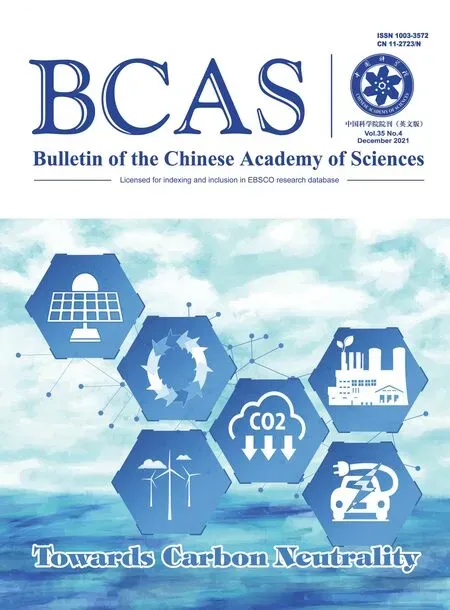In This Issue
During the session of the 75thUnited Nations General Assembly, China stated that the country will scale up its Intended Nationally Determined Contributions by adopting more vigorous policies and measures to peak its CO2emissions by 2030 and achieve carbon neutrality by 2060.
To deliver its commitments to the global response to climate change, China needs to speed up its ongoing transition to a greener and more low-carbon development. For a developing country with a population of 1.4 billion, it would be a dual challenge to meet this goal, and meanwhile secure the wellbeing of its people.

Aimed at solving this dilemma, arduous efforts are needed to integrate its commitments to tackling climate change with its own eco-social development and environmental targets. To that end, the Research Group on Sustainable Development Strategy of the Chinese Academy of Sciences proposes their solutions in the newly releasedChina Sustainable Development Report 2020 — Exploring Pathways towards Carbon Neutrality(in Chinese), based on in-depth investigations and analyses on the current situation and the potential challenges as well as opportunities, to identify priorities, establish goals-oriented mechanisms, and help secure a smooth, orderly transition to a new developing mode. With support from the Research Group,BCASpresented in its issue 3 (page 156) of this year an authorized translation of a chapter from theReport, titledCarbon Neutralityoriented Approach to Mid- and Long-term Low-Carbon Transition towards the New Climate Change Goals, introducing the background against which the goal was proposed, the challenges and opportunities this goal poses for the country, and the overall mentality of the green, low-carbon transition required to meet the target. Now let’s cast our attention to another two chapters of theReport, which respectively address the building of a policy system and an economic system for a smooth, ordered transition.
 Bulletin of the Chinese Academy of Sciences2021年4期
Bulletin of the Chinese Academy of Sciences2021年4期
- Bulletin of the Chinese Academy of Sciences的其它文章
- Buoy-borne Underwater Dark Field Imaging System Improves Marine Plankton Monitoring Capability
- Scientists Innovate On-site in situ High-Pressure Ultrafast Pump-Probe Spectroscopy Instrument
- Scientists Capture Electron Transfer Image in Electrocatalysis Process
- Imaging Atomic Structure of Hybrid Perovskite CH3NH3PbI3
- Novel Fluorescent Hydrogel Developed to Achieve Soft Biomimetic Color-Changing Skins
- Decoding Human History with Ancient DNA
